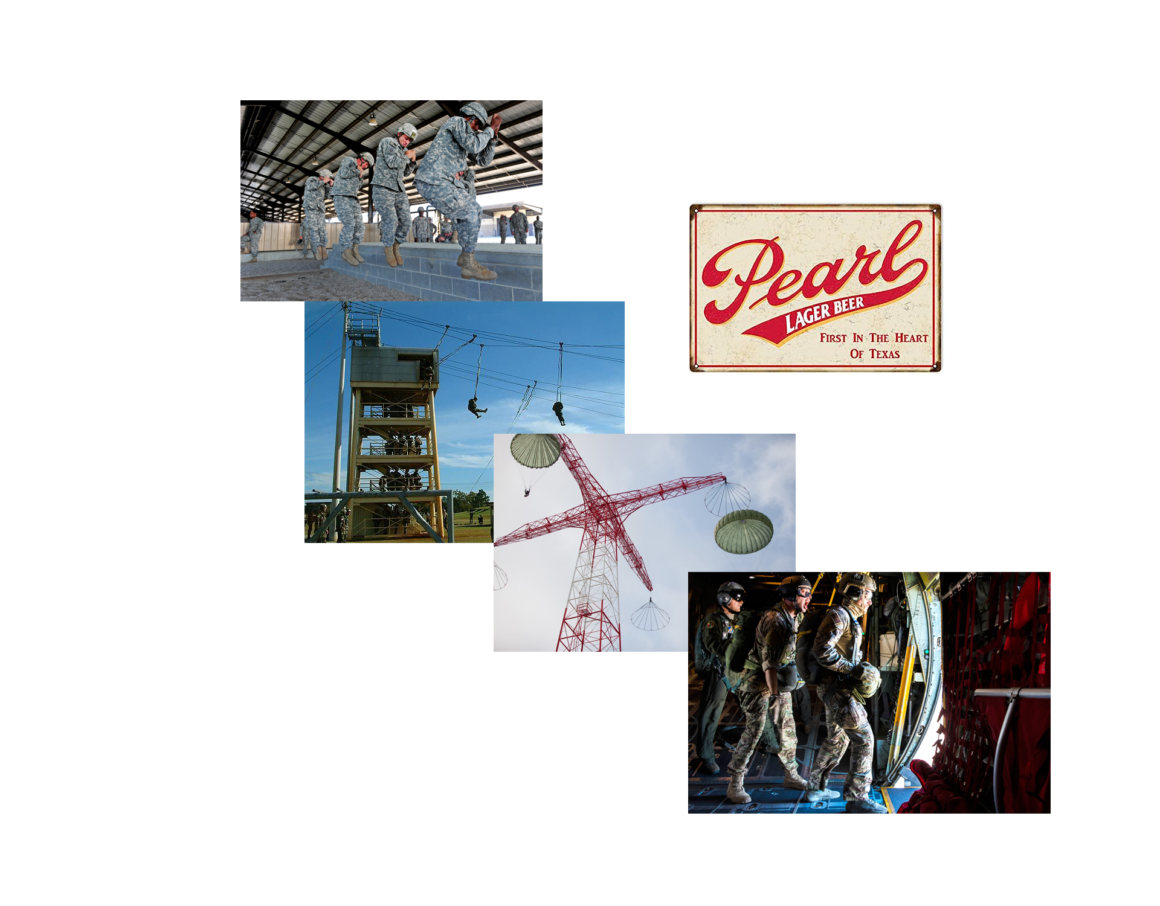As summer 1972 came to a close, there was a notable movement away from Pearl in the can to pot when I returned to El Paso after basic training. I had a couple of weeks before reporting to jump school in Georgia. I worked on improving my running and partying endurance. The former was more useful. On day one, the physical training test wiped away some potential paratroopers.
“I want to be an Airborne Ranger. I want to live a life of danger.”
They called it the Airborne Shuffle. We shuffled 3-miles in the morning. We shuffled everywhere we went. When we didn’t shuffle correctly, we had to do pushups on top of the pushups we were already doing. On one occasion our cadence singing fell short. We had to hum Jingle Bells while we shuffled. Supposedly, the rhythm corresponded to a 9-minute mile, replicating the tempo of static line jumping out of a C-130 Hercules. Shuffle to the door, grab each side, and propel yourself into the heavens. As an aside, the C-130 Hercules plane turned 18 in 1972. So, did I.
“Hit the hole, poleman!”
We did parachute things. We learned how to land (parachute landing fall). We learned how to put on a parachute with an eye on where the straps between your legs should be. We learned how to exit the plane. We performed these feats first on different platform levels and then a 34-foot tower. You would drop 8-feet before engaging the zipline and ride it out. Did I mention the proper position of the straps? We learned how to steer a parachute. We were hoisted to the top of a 250-foot tower in an open parachute and dropped. You would pull on the parachute “risers” to steer and demonstrate your interpretation of a soft landing. The reloading of the 250-tower required trainees spreading the parachute out while repeatedly yelling at the top of their lungs, “Hit the hole, poleman! Hit the hole!” The man with the pole would reset the apex of the parachute onto the frame. I have continued to use the phrase over the years, and some folks in my tribe have adopted it as well. From driving a screw to plugging in a lamp is an opportunity to voice encouragement, “Hit the hole, poleman!”
“If you don’t want to jump…”
The third week was Jump Week. You needed 5 jumps to get your wings. All the training distilled down to, “Stand up, Hook up, Shuffle to the Door, Jump right out and count to four!” If your chute didn’t open by four, the reserve parachute came into play. And, of course, there was the landing.
The week began with dated, black & white films of what can go wrong. For example, there is the Mae West. Your chute contorts to look like a large brassiere and will not open fully. There is a cigarette roll. Entangled lines turn the chute into an unusable streamer. And the “jumper-in-tow” occurs when the static line attached to the zipline in the plane does not disconnect resulting in the jumper being towed behind the plane. Disconcerting, but good to know information. Plus, heck, the Black Hat in charge told us that if we got up there and didn’t want to jump, we could ride the plane back down.
Lost brain cells prevent me from remembering his name. He was from a West Virginia reserve group. He was thirty-five. He carried around an Army Special Forces beret. His story was that jump school was the last step to wearing that beret. First jump, he was just ahead of me. It was a bit of comfort at 17 to see a man twice my age willing to do this. The door opened. The noise level went off the charts between engines and wind. The shuffle began. I was scared. Mr. Special Forces gets to the door and declares he doesn’t want to jump. Now I am terrified. I anticipate they will take him off the zipline and then I would go or not. But the jumpmaster pushed him out of the plane. Damn! Just as the noise reached a near unbearable crescendo, there was calm at 1,250 feet above the ground. The sound of the plane faded. It was breezy quiet above the patchwork of Earth stretching out across Georgia and Alabama.
Next stop Fort Campbell and the 101st Airborne.
Basic Trainng – Inoculated and Acclimated
Photo Credits: U.S. Army and Department of Defense websites, along with a random beer sign photo on Ebay.

